October 12, 2018
Picture Book Friday: The Crowd Pleasers Edition
 We’re pretty-obsessed with Hotel Fantastic, Thomas Gibeault’s picture book about a journey’s end that’s beyond your wildest imaginings. It’s a place like no other, indeed, providing a good night’s sleep to all sorts of creatures—dragons, robots, mermaids, monsters, and giants. There’s a gryphon in the gift shop and a Viking in the restaurant (where everything is roasted with dragon fire). There’s even a rooftop pool, and of course there is, because the Hotel Fantastic has everything, including a ballroom with a disco ball and an infirmary, and hotel security is a knight, a ninja, a superhero and a t-rex—but even they are no match for the PLOT TWIST that reaches in to the Hotel Fantastic at the end of the story and turns the whole thing on its nose. This book is an ode to play and unbounded imagination, as well as the realities of meddlesome siblings. Plus, Gibault’s illustrations are rich with colour and detail, drawing readers right in.
We’re pretty-obsessed with Hotel Fantastic, Thomas Gibeault’s picture book about a journey’s end that’s beyond your wildest imaginings. It’s a place like no other, indeed, providing a good night’s sleep to all sorts of creatures—dragons, robots, mermaids, monsters, and giants. There’s a gryphon in the gift shop and a Viking in the restaurant (where everything is roasted with dragon fire). There’s even a rooftop pool, and of course there is, because the Hotel Fantastic has everything, including a ballroom with a disco ball and an infirmary, and hotel security is a knight, a ninja, a superhero and a t-rex—but even they are no match for the PLOT TWIST that reaches in to the Hotel Fantastic at the end of the story and turns the whole thing on its nose. This book is an ode to play and unbounded imagination, as well as the realities of meddlesome siblings. Plus, Gibault’s illustrations are rich with colour and detail, drawing readers right in.
**
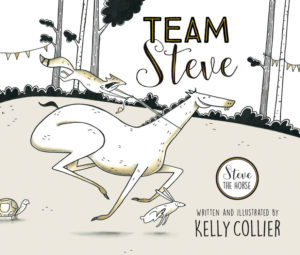 And Steve is back! We’re so excited. We loved Kelly Collier’s debut, A Horse Named Steve, and have been wondering what he’s been up lately, that loveable, self-obsessed equine. And so expectations were pretty high for Team Steve, her follow-up, but I’m pleased to announce that we heartily endorse it. And by “we,” I’m not being royal, but mean literally “we” with my team in picture book criticism, those without whom there would be no storytime, by husband and two children. We love Steve, who thinks he’s got the annual race-a-thon ALL TIED UP because he’s got the longest legs of all the creatures. Except now the rules have changed, and the race is a relay, and Steve’s on the team with Duck, Turtle and Snail. “Wait a sec,” says Steve. “A duck waddles, a turtle walks, and a snail…is a snail! How are we supposed to win?” But Steve, see, just literally can’t lose, no matter what he does, partly because this an unlikely tortoise and the hare-type story, but also because he’s got an ego as big as his heart is. This is a book with twists and turns (and plods and shuffles), and the ending was absolutely a delight.
And Steve is back! We’re so excited. We loved Kelly Collier’s debut, A Horse Named Steve, and have been wondering what he’s been up lately, that loveable, self-obsessed equine. And so expectations were pretty high for Team Steve, her follow-up, but I’m pleased to announce that we heartily endorse it. And by “we,” I’m not being royal, but mean literally “we” with my team in picture book criticism, those without whom there would be no storytime, by husband and two children. We love Steve, who thinks he’s got the annual race-a-thon ALL TIED UP because he’s got the longest legs of all the creatures. Except now the rules have changed, and the race is a relay, and Steve’s on the team with Duck, Turtle and Snail. “Wait a sec,” says Steve. “A duck waddles, a turtle walks, and a snail…is a snail! How are we supposed to win?” But Steve, see, just literally can’t lose, no matter what he does, partly because this an unlikely tortoise and the hare-type story, but also because he’s got an ego as big as his heart is. This is a book with twists and turns (and plods and shuffles), and the ending was absolutely a delight.
October 9, 2018
The Ontario Government’s Consultation on Public Education (or: WORST ONLINE SURVEY EVER)
 As a woman who literally came of age reading magazines in the 1990s (graduating from Seventeen and YM to Glamour and Cosmo—in fundamental ways, Bonnie Fuller built me), one would think that I’d have more enthusiasm for an online quiz. Certainly, I’ve taken my fair share, including one that determined what kind of kisser I was based on the shape of my lipstick (“mostly a’s!”), which was particularly illuminating seeing as I was fourteen, had never kissed anyone, and didn’t wear lipstick.
As a woman who literally came of age reading magazines in the 1990s (graduating from Seventeen and YM to Glamour and Cosmo—in fundamental ways, Bonnie Fuller built me), one would think that I’d have more enthusiasm for an online quiz. Certainly, I’ve taken my fair share, including one that determined what kind of kisser I was based on the shape of my lipstick (“mostly a’s!”), which was particularly illuminating seeing as I was fourteen, had never kissed anyone, and didn’t wear lipstick.
And since then—particularly as my media consumption moved online—I’ve dutifully checked the boxes to discover if I was Blanche or Dorothy, Samantha or Carrie, what my ultimate travel destination was, or what new hot foodie trend I should be trying. Although I will admit my quiz-taking enthusiasms were dampened by recent disclosures that online surveys were actually harvesting data with which to undermine our online privacy—but by this point I had a good-enough grasp on what kind of kisser I am (STELLAR) and my Golden Girls character (Dorothy—I will own it) that quizzes in general were much less of a fascination. There was the question too of the value of my time—I charge a whole lot more than the chance to win a free iPod for a quarter hour, my friends, and so too should you.
But then along comes our new Provincial Government with their populist leanings and fervour for “consultation.” They want to be listening “to the people”—although not so much that I’ve yet received a response from my letters to the Premier and Minister of Municipal Affairs in August about their undermining of Toronto’s upcoming municipal election, or any engagement from my tweets to the Education Minister about her government’s decision to cut a $100 million fund for school repairs among many other issues. Alas, this is a government that prefers to communicate via online quiz, for better or for worse—but mostly for worse.
I know it’s mostly for worse because last month I attempted to fill in their survey on public services, my thinking being, “I’ve got lots of opinions, and I’ve been filling out quizzes since Bonnie Fuller was editor of Flare.” I was definitely feeling pretty quiz-confident, but when it came time for the survey, I actually just shut down. Because the quiz was really, really long, and asking my opinion on matters I know nothing about. I’d come to the survey through through my interest in early childcare education in Ontario—but here they were consulting me as well on social services, Northern affairs and mining, and unemployment benefits. And not to paint this government with the evil brush or anything, but I also couldn’t properly be sure that if I skipped the parts of the survey of which I have no knowledge, interest, or relationship that they mightn’t see my lack of engagement as a way to excuse government wriggling out of providing these services altogether. (“We consulted Kerry in Toronto, and based on her feedback, we will no longer be providing infrastructure to communities in Northern Ontario.”) As I failed to complete this survey, I also found myself wondering why I was being consulted about issues I know nothing about. Aren’t there experts on these matters? Mightn’t it be more valuable to be consulting with those experts instead of with me? Oh, wait…
 But not content with their very crappy online survey about public services, this government is back with their consultation about public education. “We invite everyone – parents, students, educators and interested individuals or organizations, and also that guy screaming at the sky and the woman obsessed with anal sex who ran for PC leadership – to provide feedback on the education system in Ontario,” the survey begins. They don’t care who you are—if you are a religious zealot who is convinced that the previous sex-ed curriculum was developed by a pedophile; if you are a father who’d prefer his daughter not know the name of her body parts than be protected from sexual abuse; if you are someone who’s been sending hate mail to LGBTQ families in your community. It really doesn’t matter—they want to hear from you.
But not content with their very crappy online survey about public services, this government is back with their consultation about public education. “We invite everyone – parents, students, educators and interested individuals or organizations, and also that guy screaming at the sky and the woman obsessed with anal sex who ran for PC leadership – to provide feedback on the education system in Ontario,” the survey begins. They don’t care who you are—if you are a religious zealot who is convinced that the previous sex-ed curriculum was developed by a pedophile; if you are a father who’d prefer his daughter not know the name of her body parts than be protected from sexual abuse; if you are someone who’s been sending hate mail to LGBTQ families in your community. It really doesn’t matter—they want to hear from you.
Which makes it very important that they hear from me too, even though this survey is just as stupid as the other one, and even though it’s a giant waste of my time, and I can’t believe that I and even people who are stupider than me are being given a say in how our public education curriculum is developed—when we have teachers and other pedagogical experts who know a whole lot more about teaching and education than we do. Which was basically my answer to most of the questions in the survey—that teachers need to be the ones deciding the curriculum and that our educational system means nothing if teachers are not empowered, and also that I want my children to be learning about gender identity, LGBTQ families, about consent and protecting themselves online, because my children live in this world and not some imaginary one the anal sex lady is trapped inside (and somebody let her out, please? It doesn’t seem nice in there).
It truly was the worst online survey ever (“Mostly C’s: You are Burning With Rage at the Stumbling Incompetence of This Province’s Elected Representatives Who Should Be Too Embarrassed To Get Out of Bed in the Morning, Let Alone Posting Self-Congratulary Tweets That Have Nothing to Do With Their Portfolios“). But it’s our civic duty, my fellow Ontarians—particularly those of us without ideological axes to grind and children in the public system aka a stake in the game—to step up and do the work. Be consulted. Use your voice, and let the government know that you want a robust and well-funded public education system that supports teachers and the spectacular work they do for our children every single day.
October 8, 2018
The Reptile Club, and other great books
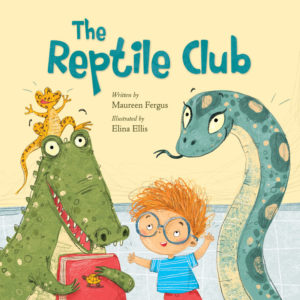 In lieu of a Picture Book Friday post, check out my round-up of great picture books for autumn—which includes the absolutely delightful The Reptile Club, by Maureen Fergus and Elina Ellis.
In lieu of a Picture Book Friday post, check out my round-up of great picture books for autumn—which includes the absolutely delightful The Reptile Club, by Maureen Fergus and Elina Ellis.
October 4, 2018
Notes For the Everlost, by Kate Inglis
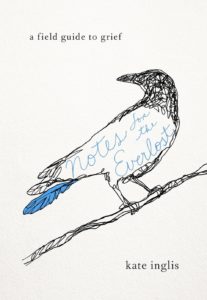 As an adult, the very first person I ever knew who was pregnant gave birth to a stillborn baby at full term, which would forever-after colour my understanding of pregnancy and its possibilities, and this understanding would be part of my impulse for creating The M Word many years later, to integrate experiences of loss into the motherhood story. Because a baby isn’t always the outcome of that story, or even a healthy baby—at least not at first. And neither is pregnancy the only path to a person’s understanding of what a mother does and what a mother is. There are so many ways to be a mother, for better or for worse, and in Notes For the Everlost: A Field Guide to Grief, Kate Inglis writes about the hardest way, which is to be a mother for a child who is no longer here.
As an adult, the very first person I ever knew who was pregnant gave birth to a stillborn baby at full term, which would forever-after colour my understanding of pregnancy and its possibilities, and this understanding would be part of my impulse for creating The M Word many years later, to integrate experiences of loss into the motherhood story. Because a baby isn’t always the outcome of that story, or even a healthy baby—at least not at first. And neither is pregnancy the only path to a person’s understanding of what a mother does and what a mother is. There are so many ways to be a mother, for better or for worse, and in Notes For the Everlost: A Field Guide to Grief, Kate Inglis writes about the hardest way, which is to be a mother for a child who is no longer here.
Now, there are several reasons why one might want to read a book subtitled “a field guide to grief.” Most obviously, if one is grieving—and Inglis has made this a practical book for such a situation, one informed by her experience of running an online forum for bereaved parents. Chapter One is titled, “The Immediate Protocol,” and the first guideline is, “Don’t apologize.” Chapter Three, “What Now,” is about finding one’s way through the first year, and it’s first sentence is, “You’ve got to get up and make breakfast.” There is good advice here, both for the bereft, but also for the people who love those who are grieving. Without being explicit, Inglis has also created a field guide for saying and doing not-terrible things around the grieving—when someone’s baby dies, don’t talk about your dead dog, please. “You will learn to surround yourself with people who understand that occasional sadness is not about them, and who never begin sentences with You should… unless they end with ...come over ’cause I just made soup.”
There’s a lot of generosity here though, toward those clumsy clods who don’t know what do say, or who say the wrong thing, who tell you that your baby’s in a better place now. Inglis writes about people whose miseries pale in comparison to hers—but also how others’ pain might make hers look slight. And what is this hierarchy anyway, and how we all takes turn being above and below. Inglis urges compassion from the grieving—for all those who are really doing their best, even when their best is awful. And there will be days when one can so generous, and other days when such generosity is not attainable, and grief is not a straight line, she writes. There is no perfect metaphor, for how it never goes away, and how it changes. She doesn’t write about “healing,” but instead about “integrating,” an ongoing process.
Another reason to read a book subtitled, “a field guide to grief,” or at least to read this one, is that because Notes for the Everlost is just an extraordinary literary creation—an engrossing and fascinating reading experience, rich with turns of phrase and imagery, as surprising and absorbing as any decent field guide should expect to be. I loved this book for its sentences and its structure, and for the harrowing, devastating story at its core, and the incredible writing, the reflection. A balance of love and anger, moving on and remembrance, holding on and letting go, living and dying, dark and light. As good as A Year of Magical Thinking, but a decade instead, what happens once the magical thinking is over, and even after that. Proof that living through tragedy is possible, even when you think you can’t or won’t. A book about death that—at its heart—is about life, and which dares to ask big questions without pretending to have all the answers.
October 3, 2018
Fall Books on the Radio
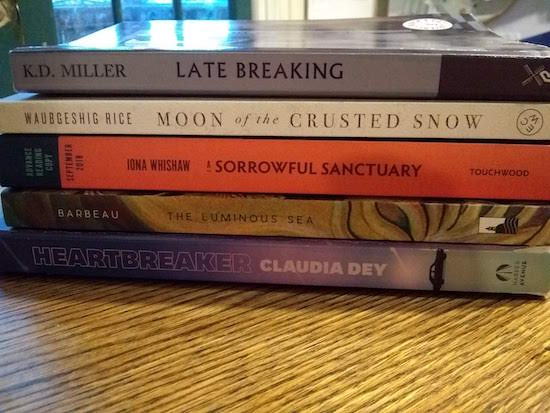
I was looking forward to my books column on CBC Ontario Morning today because these are five books I am really, emphatically excited about. Of course, I like all the books I recommended, but these ones in particular are standouts—and what a wonderful thing it is to be tasked with talking about things you really, really love. You can listen again on the podcast here—I come in around 23.40.
October 2, 2018
Staying Home to Read

I read fifteen books last month, and some of them were really long, and so many of them were really good, and I’m pleased with this progress and with how much better I feel about the world knowing that these books are in it. Books that have reminded me: I really, really love reading, which is pretty much the root of everything I get up to these days. There is even time enough for it…which is always the thing I say around this time of year before I take on twenty stupid or less-stupid commitments that render such a statement untrue. But there is only time enough because I stayed home every night. Dear Writers: I am desperately sorry I wasn’t able to attend your literary gathering, but instead I was at home reading your book.
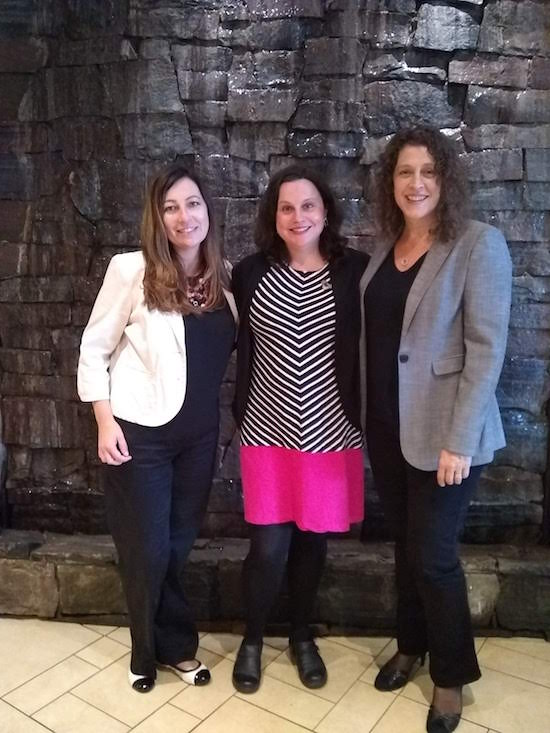
With just a couple of exceptions, of course. Last Saturday we had the pleasure of a weekend getaway to Huntsville, where I took part in the Huntsville Public Library’s Books and Brunch event with Hannah Mary McKinnon and K.A. Tucker. McKinnon’s most recent book is The Neighbours, which is the novel that kicked off my holiday reading in July, a twisty domestic drama that hinges on the premise of a woman’s ex-boyfriend moving in with his family to the house next door. Let me tell you how the situation turns out: NOT SO GREAT, ACTUALLY. And I read Tucker’s novel (her sixteenth, I think?), The Simple Wild, and I LOVED IT. It was funny, gripping and swoon-worthingly romantic in the way all my favourite 1990s’ films were. Together, the three of us had a fun and engaging conversation about writing, books, and publishing, and it was absolutely fabulous to be in such excellent company.
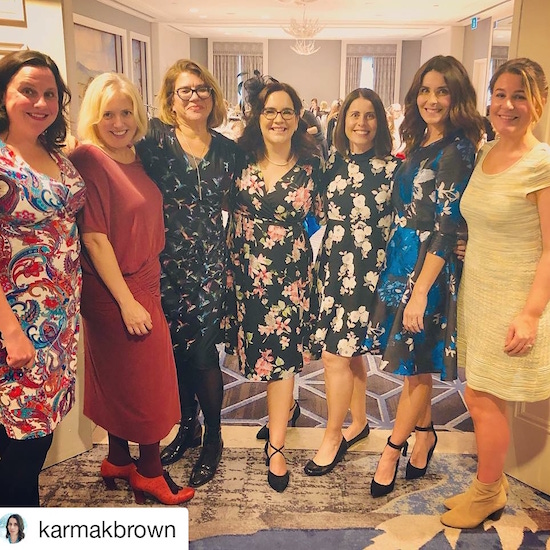
And then this weekend I found myself at another wonderful event, this time with members of my coven (because doesn’t every witch need a coven, and how fortunate I am that this one adopted me) celebrating Jennifer Robson’s forthcoming novel, The Gown. It was an afternoon tea, which is always up my street, and the food was divine, the bookish conversation delightful as we listened to Jen and Kate Quinn, and the table conversation was even better, as it always is when we get together. Definitely worth leaving the house for—which is not a phase I throw around lightly.
October 1, 2018
The Journey Prize Stories 30
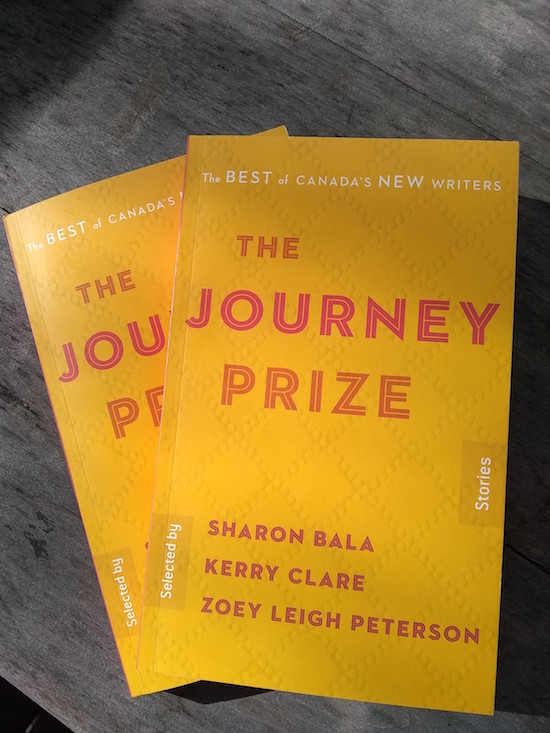
Seasons aside, a year is kind of an arbitrary span of time, but I love that my 2018 has been defined by the gestation of The Journey Prize Stories 30 and the experience of being a juror for the prize. It was January and the dead of winter when I received an email from McClelland and Stewart Editor Anita Chong with this amazing opportunity, and it was February and March as I read the stories, 100 of them, usually while my children were at Brownies or swimming lessons, and I was the woman with the giant bundle of papers. April and May were my conversations with co-jurors Sharon Bala and Zoey Leigh Peterson, which were so rewarding and inspiring and we learned a lot from each other (and then Sharon and I spent a day together at The FOLD in May, and my admiration for her was set in stone). Through May and June, we wrote our introduction together, and set the stories’ order, which was also terrifically interesting. And then our jury was announced in late July, the finalists not long after. And last week the book become available in stores, that giant bundle of papers rendered into something readable and magnificent. I’m reading it now, a story per night, revisiting these stories in a very different context from where I found them in the first place. What a journey, to be more than a bit corny. But I am really excited about this book. (And about the presentation of the winner at the Writers’ Trust Awards in November. The Journey Prize year goes on and on…)
Anyway, I now implore you all to go out and buy The Journey Prize Stories 30, because it’s such a rich and wonderful collection of stories. But I’ve got a second copy going that I want to give away to someone in the meantime. If you’d like a chance to win it (and have a Canadian address), please leave a comment on my blog or Facebook or Twitter or Instagram telling me what your favourite Canadian story, or story writer, or story collection is. Winner will be chosen Monday October 8.
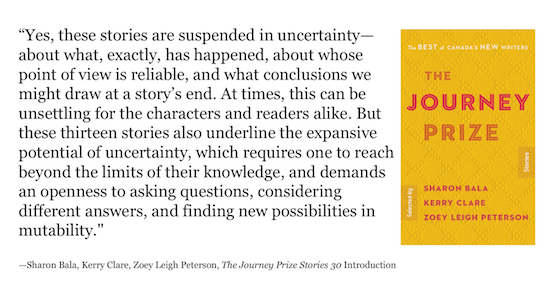
September 28, 2018
Mary Who Wrote Frankenstein, by Linda Bailey and Julia Sarda

“HOW DOES A STORY BEGIN? Sometimes it begins with a dream…”
I’ve been really looking forward to Mary Who Wrote Frankenstein, by Linda Bailey, illustrated by Julia Sarda, which brings together so many of my favourite things: Sarda’s creepy/gorgeous art—she also illustrated Kyo Maclear’s The Liszts; early feminist history with references with Mary Shelley’s mother, Mary Wollstonecraft (Shelley’s father, William Godwin, would teach her to read by tracing the letters of her mother’s gravestone; the fantastic story of the creation of the Frankenstein; and also the character of Mary Shelley herself, bookish and rebellious. By the time she is a teenager, Bailey writes, Mary “has become a Big Problem,” and she’s sent to live away from her family in Scotland. “But at sixteen, when she returns to her family, she is still a Big Problem.”
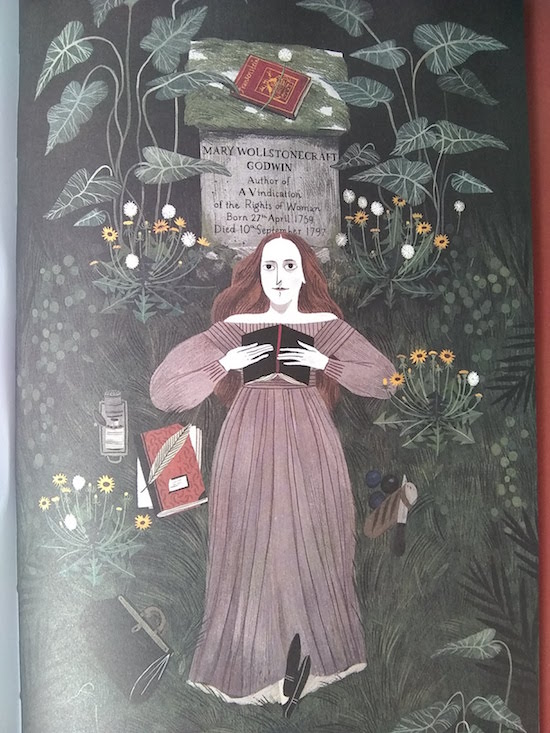
“And what does she do next?” the story continues. “She becomes an even Bigger Problem. She runs away with a brilliant young poet…” In dark and brooding spreads, we see Mary Shelley and her companions travelling through Europe, meeting up with Lord Byron in Switzerland, and that dark and stormy night with the ghost story contest 200 years that has since become the stuff of legends and birthed one of the most famous stories ever told.
Throughout the story and detailed in the illustrations are all the seeds that would culminate in the Frankenstein story, intermingled with an emphasis on tales and dreamy, and steeped in a delightfully creepy aesthetic. Readers discover that powerful stories can come from unlikely places—even an eighteen-year-old girl who wasn’t sure she’d have a story to tell. We see the way that the borders between stories, dreams and life are fuzzy, and how they overlap in places—and the incredible possibilities this offers for what we can make of our lives.
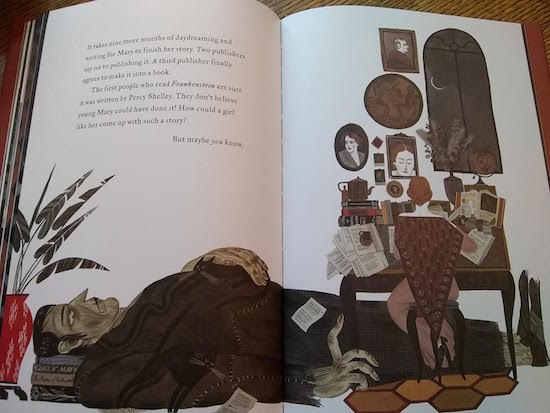
September 27, 2018
No Choice, by Kate McKenna
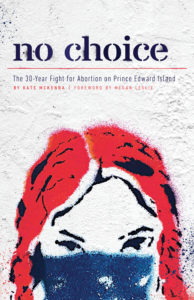 I think it’s because it just make sense to take for granted the things that one should take for granted (such as bodily autonomy) that feminist history seems to so often be overwritten. After I had an abortion in 2002, it would take years before I properly understood that I was fortunate to be able to access the procedure in such a straightforward manner. It never even occurred to me that I wouldn’t be able to. I had no idea that just ten years previous, in 1992, an abortion clinic around the corner from where I now live had been firebombed. Such recent violent history—in my own neighbourhood—but I hadn’t been paying attention.
I think it’s because it just make sense to take for granted the things that one should take for granted (such as bodily autonomy) that feminist history seems to so often be overwritten. After I had an abortion in 2002, it would take years before I properly understood that I was fortunate to be able to access the procedure in such a straightforward manner. It never even occurred to me that I wouldn’t be able to. I had no idea that just ten years previous, in 1992, an abortion clinic around the corner from where I now live had been firebombed. Such recent violent history—in my own neighbourhood—but I hadn’t been paying attention.
And nor did I understand that across Canada, even now, access to abortion was varied and even impossible—particularly for women in rural areas and across the Maritimes. In her book No Choice: The 30-Year Fight for Abortion on Prince Edward Island, Kate McKenna explains the power held by the Catholic Church in PEI and how that power enabled pro-choice activists to stack hospital boards by 1986 so that not a single abortion would be performed there for 30 years afterwards. She also shows how the the fight by pro-choice activists was exhausting, marked by setback and after setback. It didn’t help that in such a small and conservative province, people speaking up for the pro-choice cause could find themselves targeted and alienated. (For a long time I thought the history of progressivism was one of triumph. I read a biography of Jane Jacobs two years ago, and recall someone telling me that the real reason Jacobs stands out is that she’s one of the few fighters who ever managed to win.)
For a long time on Prince Edward Island, nobody won. After activism in the 1980s and 1990s, the pro-choice movement on PEI had mostly faded away. Women who found themselves pregnant would have to travel out of province for an abortion, and for many women (particularly those who were vulnerable and/or low-income) this was impossible. Women who returned home after these abortions were unable to access the aftercare they needed, sometimes with dire consequences. McKenna writes about women she knew pooling funds for “abortion insurance.” But in 2011, things started to change. It was a perfect confluence of events that no one could have planned—the rise of social media that allowed women to share and tell their stories; an activist group McKenna and her friends started to counter an annual “right-to-life” event in Charlottetown; enough time having passed for feminists to have forgotten the future was hopeless, I suppose; data from researchers at the University of Prince Edward Island; women who were willing to be public with their abortion stories; a guerrilla campaign of posters featuring the striking image shown on McKenna’s book cover. By 2016, PEI had a new Premier who was willing to consider an alternative to that “status-quo” that so many other politicians had been so comfortable with—McKenna quotes activist Professor Colleen MacQuarrie as being exasperated by this focus on status-quo, “Like it was a good compromise. Women’s health against…people that feel a little uncomfortable with the idea of abortion.”
On March 30, 2016, the PEI government announced that they would create a reproductive health centre in Summerside, PEI, that would offer abortions, among other services. After thirty years of fighting, the women of PEI had won the right to healthcare that millions of other Canadian women had access to. But the story isn’t over—in feminism, it never is. No doubt, the pro-life forces are still at work in PEI, and Anne Kingston has written about their plans to play a major in the 2018 Federal Election. And so that end, it’s smart to know what Canadian women are going to be up against, and to learn that there is value in fighting, that the battle can be won,
September 26, 2018
Spending a Morning at School
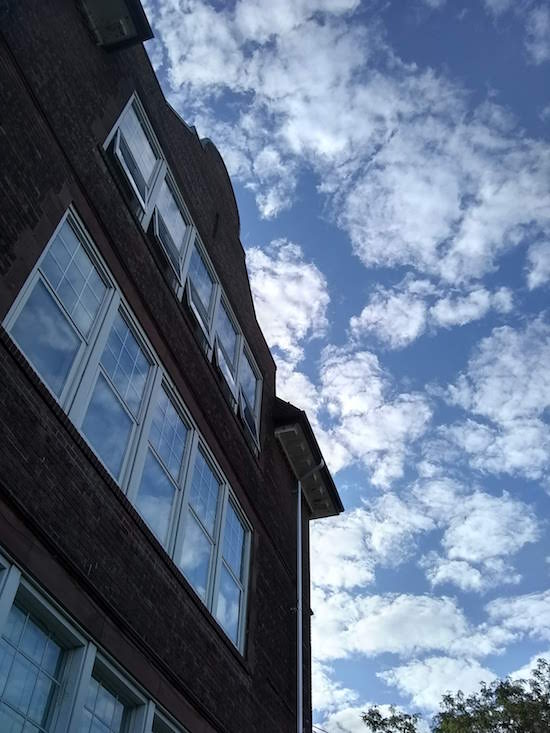
“All those beautiful back to school pics are a reminder (to me, anyway) of how deeply vested so many people are in the education system & that it can be political dynamite to mess with it recklessly.” —Shawn Micallef
One reason I like volunteering at my children’s school is because I’m nosy. And when a nosy person commits to spending a few hours administrating a fundraiser from the office—sorting order forms by classes with letters to parents—that person is not simply organizing papers. She is paying attention. And she is welcome to be there paying attention as she shuffles papers, because she’s going to be bringing in a few hundred extra dollars to the school coffers, which are chronically underfunded. Every little bit helps, and teachers and school administrators are expert at stretching those dollars at far as possible, finding value, and making them count. So I’m happy to help, and besides, there are plenty of places for me to work—the Vice Principal’s office? The nurse’s room? Because, of course, there is no money either for Vice Principals and Nurses anymore, and the Secretary relies on volunteer support. Speaking of stretched, and I’ve not even got to Education Assistants (gone the way of the Vice Principal…) or caretaking staff (of which there are a few, but as few as possible due to budget constraints). This is not austerity, but also I can’t remember the last time our provincial government made a major investment in public education. And yet there is something miraculous about the way it all functions anyway, credit for all of which is due to the amazingness of people.
Part of the reason it works is because we expect it to—every morning we drop off our children, those extensions of our hearts, and then we go out into the world to do the things we do, and we take it for granted that our children are safe and cared for, that they’re learning, that they’re even happy. And for many of our children, this is mostly true, at least on the good days. And when all our children went back to school in September I was struck by the reality that plenty of parents who were taking our schools for granted as much as I did had voted to elect a provincial government in June with no respect for teachers and a disdain for public education in general. (Our new Minister of Education’s background is managing a goat cooperative, and she has still given no media interviews about her portfolio which has been controversial since her government elected to dismiss an updated sex-ed curriculum [against the advice of experts] and cancel a curriculum rewrite that would have boosted Indigenous content. Her deputy is a twenty-one-year-old who was homeschooled and whose limited worldview is informed by his extreme religious views)
And how could they do that, I wondered. How could they send their children into the care of people whose profession their electoral votes had so undermined?
“Because they know teachers will still do the best possible job with their children,” answered my friend Dorothy Palmer when I posed that question on Facebook a few weeks ago, and Dorothy, a retired teacher would know. But I know too, or at least I’m reminded after the time I spent this week sorting papers in the office, paying attention. To the tiny people from kindergarten who had the huge responsibility of bringing the attendance down to the office this morning, in pairs of course. To the older girl who’d hurt her knee in gym and came to get ice, and also all the other people who came to get ice—after falling on the playground, getting hit by a soccer ball, going too wild on the monkey bars. Ice is the most tremendous tool, and it makes so many things okay again. Which the teachers know, the teachers who come into the office to check their mailboxes, who greet their colleagues jovially and say hi to students they haven’t seen since last year and remark on who has grown tall over the summer.
There was a little boy in the office this morning and it was his first day of school ever, and he was terrified, unhappy to be there. His dad was in the office filling out paperwork, but could hear his son crying down the hall where the boy was being comforted by an ECE. Over the course of my time in the office this morning, this small boy and his father were greeted by teachers, and welcomed to the school, and the kindergarten teacher came to ask if he wanted to come along to gym. When I finally left awhile later, the boy had joined his new class, no one was crying, and the relief on his father’s face in the hall reminded me of how good I felt when my eldest daughter finally stopped crying every morning for the first month of Junior Kindergarten, that maybe we could find a place here.
At our school, the Principal knows everybody’s name, and when it’s your birthday they put your name on the announcements and you get to come down to the office and receive a brand new pencil. The school Secretary is mostly magical and plays her guitar for the kindergarten classes. At our school, psychologists and speech therapists and other specialists visit to give support to kids who need it. My daughter has had occupational therapy help with handwriting, and speech therapy. When her Grade 3 teacher had concerns about her speech, she went back and talked to her teachers from the year before. At our school, our amazing music teacher retired after 28 years of teaching there, and (without her knowing) every single child at school, hundreds of them, had been taught a song just for her, and on her final day of school last year they sang to her, and a lot of people cried. (Our music teacher has not been replaced. What kind of school has music teachers anymore?)
I think sometimes people underestimate how good teachers are at doing their jobs, what experts they are in their professions. I absolutely know that the role of teachers in our society is shockingly undervalued, the incredible role these people play in our families’ day-to-day lives. A good teacher can change a life, and imagine what happens to a life when a kid has one good teacher after another. I sat in the office this morning, and said hello to a number of these teachers, and thought about what we’re trusting them with, up there with heart surgeons and bridge builders. Is there anyone more important?
Sit in a school office for a morning, and you get a glimpse into your community. Harried parents straggling in late, kids with disruptive behaviour, students living with their mothers in shelters because they’re fleeing family violence and the special needs that come with that. Our school specifies 10% of all money raised throughout the year go into a fund for students who are most in need, and this money has paid for eye glasses, winter clothing, gift cards at the holidays for families who wouldn’t otherwise be able to afford things. If a child shows up at school without a lunch for reasons other than a forgetful dad or mom, they will be quietly accommodated. Parents turn up with hugely pressing concerns which they seem blasé about, and others hysterical about incidental problems, and all of them are treated with care and consideration, and some other kid will arrive because he has a stomach ache and somebody will call his mom, and the day will continue, even after all my papers are filed. There is no such thing as extraordinary there, because everything is extraordinary all the time, and it works, because the people do, in spite of everything. I can’t imagine who’d we be without them.





